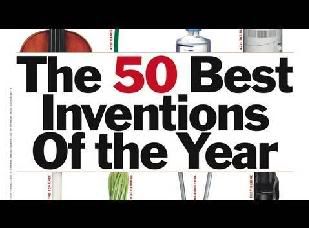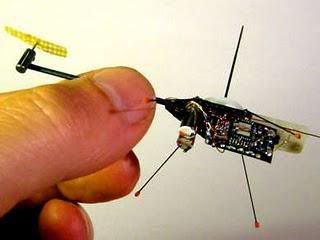 In its efforts to estimate the cost-of-living for a well-heeled expatriate, consulting firm Mercer gathers information about the cost of over 200 items in 214 urban centers. For this list, used data about the price of a cup of coffee from cities in the Asia-Pacific region. Mercer's researchers try to use the same international chains across countries. Where there is no international chain available, they use the cost of a cup of coffee at an upscale hotel. Here are the 20 most expensive Asian cities for java drinkers.
In its efforts to estimate the cost-of-living for a well-heeled expatriate, consulting firm Mercer gathers information about the cost of over 200 items in 214 urban centers. For this list, used data about the price of a cup of coffee from cities in the Asia-Pacific region. Mercer's researchers try to use the same international chains across countries. Where there is no international chain available, they use the cost of a cup of coffee at an upscale hotel. Here are the 20 most expensive Asian cities for java drinkers. In its efforts to estimate the cost-of-living for a well-heeled expatriate, consulting firm Mercer gathers information about the cost of over 200 items in 214 urban centers. For this list, used data about the price of a cup of coffee from cities in the Asia-Pacific region. Mercer's researchers try to use the same international chains across countries. Where there is no international chain available, they use the cost of a cup of coffee at an upscale hotel. Here are the 20 most expensive Asian cities for java drinkers.
In its efforts to estimate the cost-of-living for a well-heeled expatriate, consulting firm Mercer gathers information about the cost of over 200 items in 214 urban centers. For this list, used data about the price of a cup of coffee from cities in the Asia-Pacific region. Mercer's researchers try to use the same international chains across countries. Where there is no international chain available, they use the cost of a cup of coffee at an upscale hotel. Here are the 20 most expensive Asian cities for java drinkers.Bangladesh
Dhaka: $2.02
International chain Coffee World opened its first store in the nation in its capital, Dhaka, in 2005. It currently has five locations in Bangladesh,
The Philippines
Manila: $2.16
As late as the 1980s, the country was a top producer of coffee beans, according to the quarterly journal Tea and Coffee Asia, but now it grows on its own soil less than half of what it consumes annually. The main reasons for the slowdown, the journal says, are "high land taxes, a lack of government support and infrastructure and labor-intensive harvesting."
Pakistan
Karachi: $2.24
Tea consumption in Pakistan is among the highest in the world, according to a May 2010 report by research firm Euromonitor, but coffee has growth potential as "consumers develop a taste for the product." India's biggest coffee chain, Café Coffee Day, opened a store in Pakistan's largest city, Karachi, in 2006--the first place outside of India and Vienna it targeted for expansion--and the U.K.'s largest coffee chain, Costa Coffee, built an outpost there in 2005.
Sri Lanka
Colombo: $2.36
First Dutch then British colonists started producing coffee in Sri Lanka, then called Ceylon, during the 18th and 19th centuries, according to the quarterly journal Tea and Coffee Asia, and by 1870 coffee exports had reached 100 million pounds (weight) annually. But a lethal fungus devastated the crop, and colonists later decided to cultivate tea instead.
Cambodia
Phnom Penh: $2.85
Coffee was originally introduced to much of the region by European colonizers, according to the quarterly journal Tea and Coffee Asia, and it was the French who brought it to Vietnam, Laos and Cambodia. In April Australian chain Gloria Jean's Coffees opened its first store in capital Phnom Penh.
Indonesia
Jakarta: $3.41
Vietnam and Indonesia (12.6% and 4.59% of global production respectively) are the two largest coffee producers in ASEAN, according to the quarterly journal Tea and Coffee Asia. Dutch colonists introduced the production of coffee to Indonesia, and it is now the world's fifth-largest producer of coffee beans and the world's largest supplier of robusta, a type of bean that is resistant to rust. Consumption is also on the rise--from both local and international shops--albeit mostly of a lesser quality coffee than is produced for export.
Brunei
Bandar Seri Begawan: $3.54
An Islamic country with a largely Malay population, alcohol is banned in Brunei. Most residents drink water, tea, fruit juices, soft drinks or coconut milk, and coffee is consumed in large quantities. In 2001 the first branch of American chain The Coffee Bean & Tea Leaf opened in Brunei; there are currently four locations open in the country.
India
Chennai: $2.59; New Delhi: $2.91; Bangalore: $3.02; Mumbai $3.75
India has the potential to produce 300,000 tons of coffee beans a year, while domestic consumption is about 80,000 tons, according to the quarterly journal Tea and Coffee Asia. Experts expect the domestic market to grow about 10% per year. The nation's biggest coffee chain, Café Coffee Day, has over 400 outlets and competes with Barista Coffee Company (bought by Italian coffee company Lavazza), Costa, Coffee World, Gloria Jean's and others.
Myanmar
Yangon: $3.67
Myanmar grows a very small percentage--about 0.05%--of the world’s coffee, according to the quarterly journal Tea and Coffee Asia, with 60% being the arabica variety and 40% robusta. Many growers run small operations and most locals drink tea, and in any case the price of a cup of coffee is more than the average daily per-capita income in Myanmar, formerly Burma.
Vietnam
Hanoi: $3.48; Ho Chi Minh City: $3.75
Along with Indonesia and India, Vietnam is a major coffee-producing nation in the region, according to the quarterly journal Tea and Coffee Asia. French missionaries introduced a coffee-growing culture to their colony, and today Vietnam is the second-largest coffee producer and exporter in the world, after Brazil. Coffee consumption is also high, with Vietnamese-style coffee shops and international chains populating most cities.
New Zealand
Auckland: $3.83
New Zealand's coffee market is relatively well-developed compared with countries in Southeast Asia. Consumers there are more particular about the type of coffee they drink; they often inquire into its origin--whether it is fair trade or organic, its degree of sustainability--according to an April 2010 report by research firm Euromonitor. There are over 120 roasters in New Zealand.
Thailand
Bangkok: $4.07
While the nation is the third-largest coffee producer in Southeast Asia, according to the quarterly journal Tea and Coffee Asia, it was only in the 20th century that production was ramped up after the realization that Thailand was importing eight times more coffee than it produced. Much of the coffee grown in Thailand eventually gets turned into instant coffee, but purists remain hopeful that farmers will improve the quality of their crop.
Australia
Sydney: $3.55; Melbourne: $3.55; Canberra: $3.63; Perth: $3.99; Brisbane: $4.08; Adelaide: $4.25
In 2000 Starbucks opened its first store in Sydney through a joint venture, but in 2002 it acquired 100% of its operations there. The Australian Coffee Traders Association says that virtually all coffee consumed in the country is imported. Coffee consumption per capita has doubled over the last 30 years, according to the ACTA. While instant coffee comprises 80% of sales, the premium, roast and ground coffee segments are growing as consumer tastes become more sophisticated.
Malaysia
Kuala Lumpur: $4.39
British colonists started cultivating arabica in the country during the 18th century, according to the quarterly journal Tea and Coffee Asia, and less than 10,000 tons of coffee are produced there each year. Most of the coffee grown is a relatively obscure type called liberica. Malaysians are big coffee drinkers, especially in local kopi shops; in 2008 Starbucks opened its 100th store there.
Singapore
Singapore: $4.60
Though it grows little to none of its own coffee, Singapore is an exporting hub and its diverse Malay, Chinese, Indian and Arab residents are avid java drinkers, according to the quarterly journal Tea and Coffee Asia. A February 2010 report by research firm Euromonitor noted that sales of hot drinks didn't dive noticeably during 2009's global recession, buoyed not only by robust coffee sales but by increased consumption of fruit and herbal teas.
South Korea
Seoul: $5.19
Sales of hot drinks increased significantly in 2009, due mostly to consumers' growing preference for coffee, according to a March 2010 report by research firm Euromonitor. The proliferation of Western-style coffee shops plus improved sales of instant coffee helped boost the drink's status. Euromonitor expects prices of fresh coffee, sold through these retail chains, to climb. In 2004 Starbucks opened its 200th store in South Korea.
Hong Kong
Hong Kong: $5.79
In recent decades a coffee culture has grown in Hong Kong, known as a tea-drinker's city. (Though one drink served at traditional diners is a concoction that is half-coffee, half-tea.) A March 2010 report by research firm Euromonitor noted that as consumers are attracted to high-end shops that boast high quality drinks, the number of specialist coffee shops is increasing.
Taiwan
Taipei: $5.92
Taiwan's strong café culture helps keep coffee and tea sales high, a March 2010 report by research firm Euromonitor. Even convenience stores like 7-Eleven and Family Mart serve freshly brewed coffee. Parts of Taiwan, like Gukeng, grow coffee, but most of the beans are exported. One popular signature drink of 85C Bakery Café, a coffeehouse chain in Taiwan with more outlets in the country than Starbucks, is the sea-salt latte.
Japan
Nagoya: $4.99; Osaka: $6.10; Tokyo: $6.65
Tokyo was home to the first Starbucks outpost outside of North America, which opened in 2001; in 2006 Starbucks opened its 600th store in Japan. Commodities Nowreported that Japan is now the world's third-largest coffee-consuming nation and is home to more than 10,000 coffee shops. Japan is also likely to remain the leading per capita consumer of coffee products in Asia, according to the quarterly journal Tea and Coffee Asia.
China
Tianjin: $4.39; Nanjing: $4.39; Chengdu: $5.12; Qingdao; $5.56; Shenzhen: $5.86; Shenyang: $5.86; Shanghai: $6.59; Guangzhou: $7.03; Beijing: $7.17
Though per-capita consumption is still relatively low, Commodities Nowreported that coffee drinking in the world's most populous nation has doubled since 2002. In fact, China--and India--are seen as the fastest-growing markets for coffee consumption in the region, according to the quarterly journal Tea and Coffee Asia.It hasn't yet achieved its full potential when it comes to producing fine coffees, but urbanization and the spread of international chains like Starbucks will help propel the drink's popularity.
Source: forbes.com
Subscribe to:
Post Comments (Atom)








0 Response to "Asia's Most Expensive Cup Of Coffee"